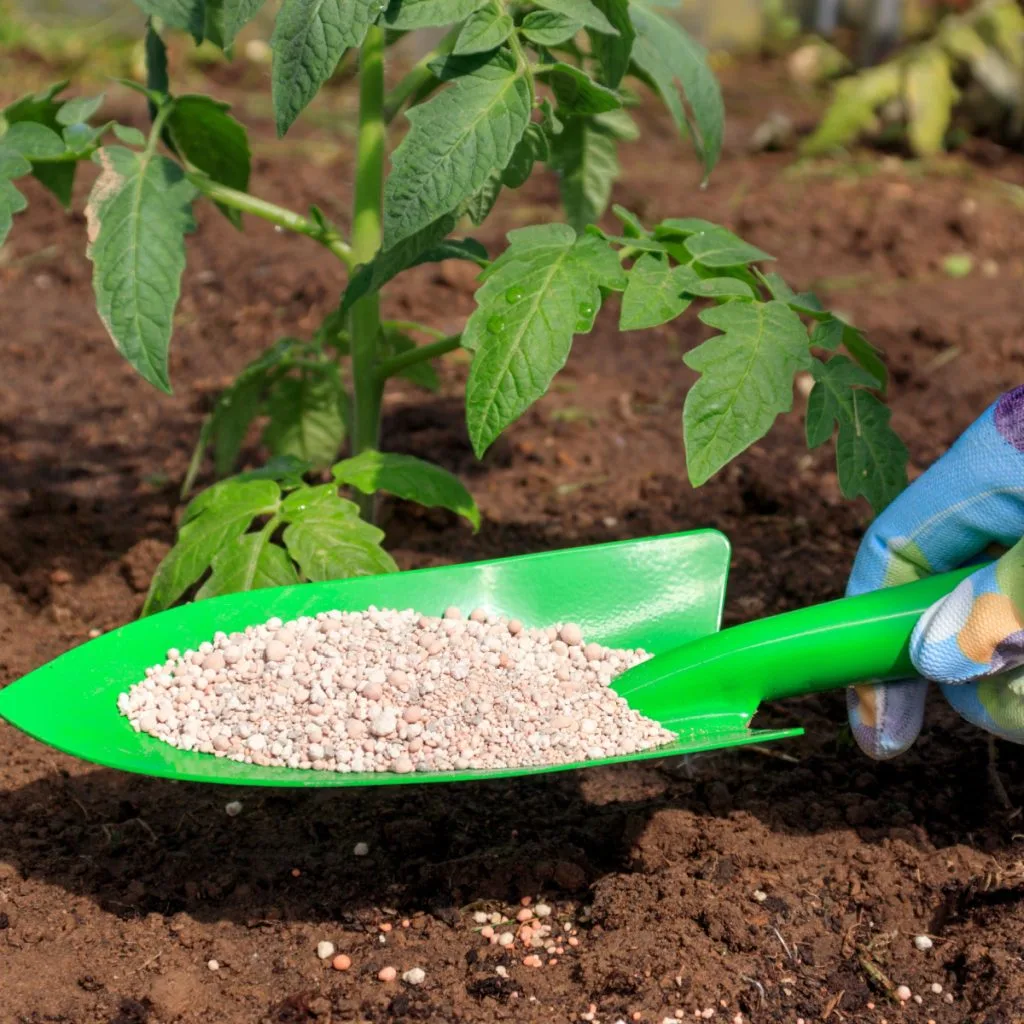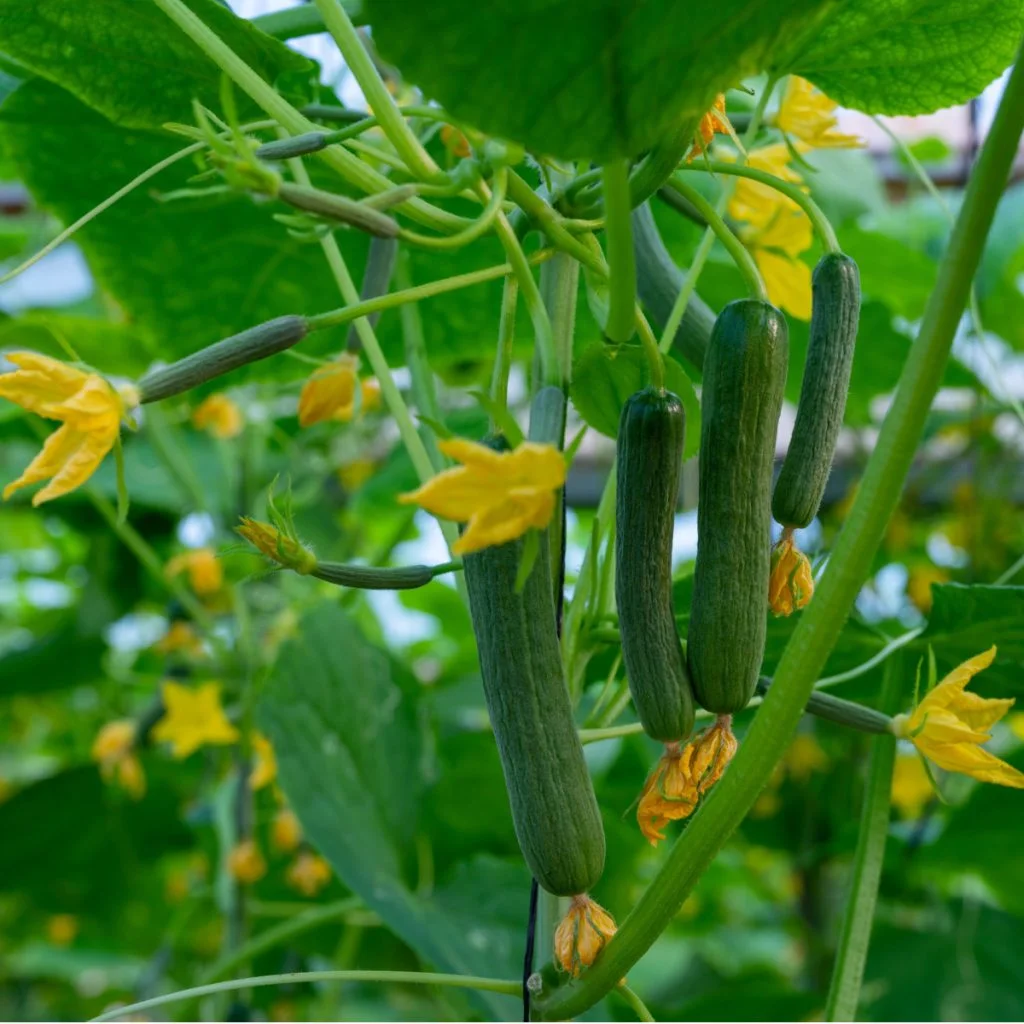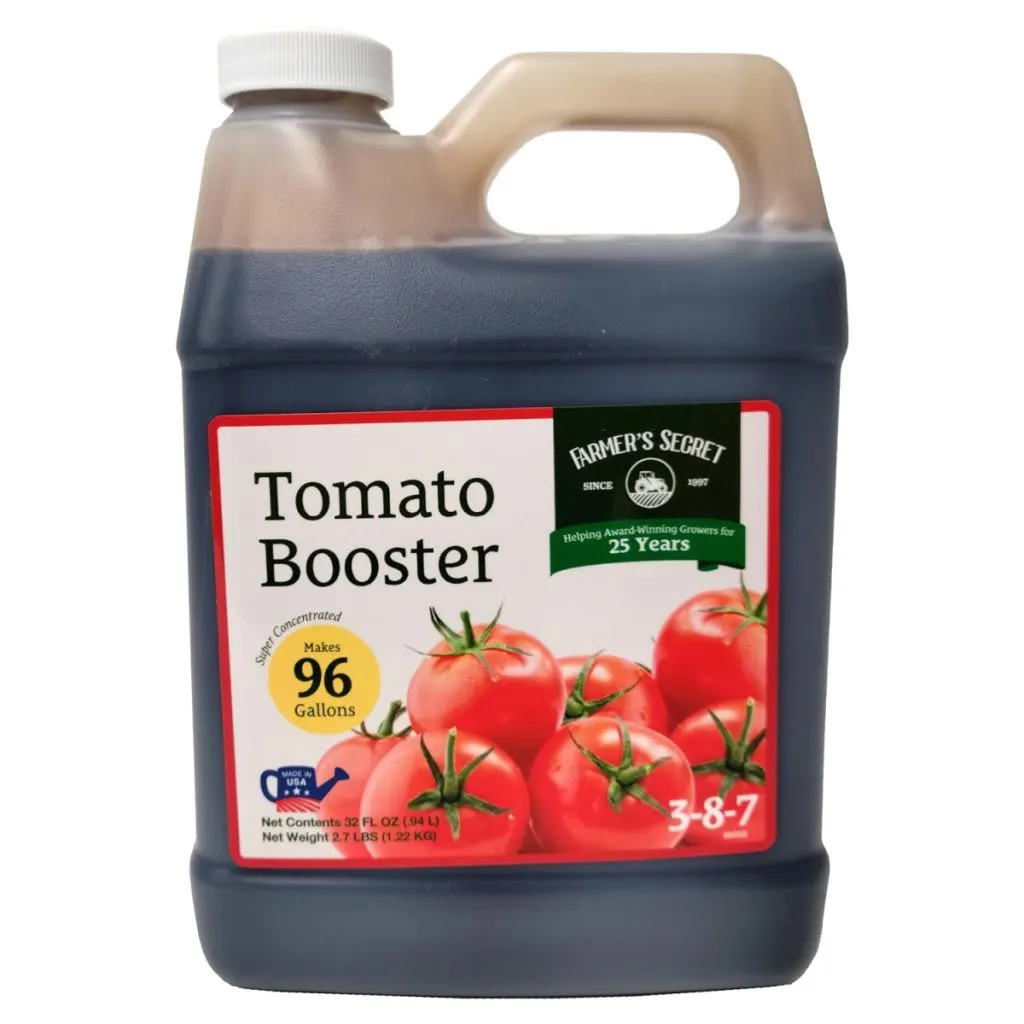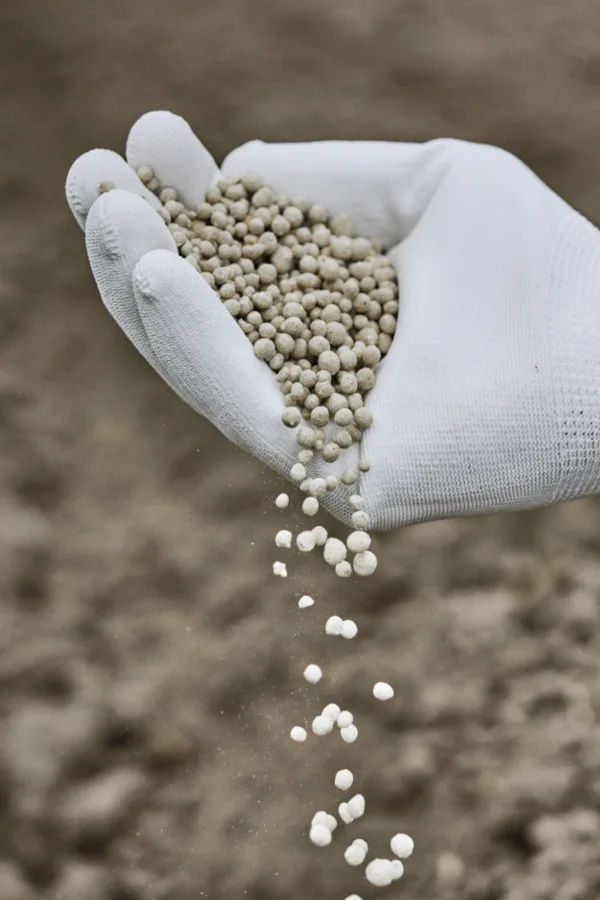When it comes to growing a healthy and productive vegetable garden, there’s one thing that plays a bigger role than almost anything else – and that something is fertilizing your plants on a regular basis!
Whether you’re growing tomatoes, corn, cucumbers, peppers, squash, or leafy greens, vegetable plants need a steady supply of nutrients to thrive. They not only need power to grow strong stems and lush foliage, but they also need fuel to form flowers. And even more to eventually turn those blooms into fruits and vegetables.
But unfortunately, many gardeners make an unknowingly big mistake when fertilizing their vegetable plants. It’s a miscue that may not seem obvious at first. Why? Because it often results in plants that look healthy and full of growth. But, as you will see below, all of that healthy green foliage is not always a great sign for a good harvest.

As it turns out, all too many gardeners end up feeding their plants the wrong nutrient mix. And it often leads to plants that are growing leaves and vines like crazy, but that never seem to bloom or produce much of a harvest.
With giving your vegetable plants the right mix of power in mind – here is a look at why vegetable gardens need regular fertilizing, and how to do it with the perfect dose of power!
How To Avoid The Biggest Mistake When Fertilizing Vegetable Plants
Why Vegetable Plants Need Regular Fertilizing
Vegetable plants are heavy feeders. They need more energy than most plants because they go through multiple growth stages quickly. First when forming foliage, then when creating flowers – and finally when developing fruit.
Every part of that process takes nutrients. But unlike native perennials or trees that grow slowly over time and don’t need constant feeding, vegetable plants use up nutrients in the soil fast.
This is especially true in raised beds or container gardens where the limited amount of soil can only hold so many nutrients. After a few weeks of growing, most soil is already running low on the nutrients vegetables need most. Especially the key nutrients of phosphorus and potassium.
That’s where fertilizer comes into play. Fertilizer is a great way to replenish what the soil has lost and keep the plants moving forward. But only if it’s the right kind. And sadly, that’s where many gardeners take a wrong approach.

Fertilizing With Too Much Nitrogen
The number one mistake gardeners make with fertilizing vegetable plants is using fertilizers that are too high in nitrogen. Nitrogen is one of the three main nutrients in any fertilizer, usually listed as the first number in the N-P-K ratio.
It does play a big role in leaf and stem growth, so it’s not useless. In fact, it’s important early in the plant’s life when it’s first growing foliage. But if a fertilizer contains too much nitrogen – especially after a plant has already become established – it can cause big problems.
When plants take in large amounts of nitrogen, they put most of their energy into growing more foliage. This can lead to tall, bushy plants with rich green leaves, but very few flowers. And without flowers, there’s no chance for fruit to form.
That’s especially troubling for vegetables like tomatoes, cucumbers, and peppers, which need to blossom before they can produce anything you can harvest.
You may look at your tomato plant and think it’s doing great because it’s tall, full of leaves, and looking healthy. But if there are no flowers forming, or worse, flowers forming and then dropping, there’s a good chance the plant is getting too much nitrogen. It simply has no reason to slow down and focus on reproduction (fruiting) when it has everything it needs to just keep growing bigger.

What Vegetable Plants Really Need – More Phosphorus and Potassium
This problem happens most often when gardeners use all-purpose fertilizers or basic “plant food” products that are heavily nitrogen-based. Many of these fertilizers have N-P-K ratios like 15-15-15 or even 20-20-20. And those high nitrogen numbers are a red flag when it comes to producing fruit and vegetables.
When fertilizing vegetable plants to flower and set fruit, they need more phosphorus and potassium than nitrogen. These two nutrients are the key to powering blooms and fruit in plants.
Phosphorus (the middle number in the N-P-K ratio) supports root development and flower formation. Potassium (the third number) helps the plant with overall strength, including disease resistance and fruit development.
That’s why the best fertilizers for a vegetable garden will have a nutrient ratio with more phosphorus and potassium compared to nitrogen. For example, a good garden fertilizer might be something in the range of 3-8-7 to 3-15-15.
In each case, you’ll see that the nitrogen is kept low, while the phosphorus and potassium are two to five times higher.

Feeding For Blooms & Fruit
By feeding your plants this kind of fertilizer, you’re giving them what they need to shift their focus from just growing tall and leafy to actually forming flowers and fruits. This balance is especially important once your plants are a few weeks old and past the early growth phase.
At that point, the goal isn’t more leaves – it’s more cucumbers, tomatoes, beans, squash, or whatever crop you’re growing. See our article: How To Fertilize Cucumber Plants In The Summer.
Why Liquid Fertilizers Are Best For Fertilizing Vegetable Plants
When it comes to how you apply fertilizer, liquid fertilizers are often the better choice for vegetable gardens. That’s because they work fast and can be absorbed both through the roots and the leaves. It’s a great way to deliver nutrients quickly to plants that need an extra boost. Affiliate Link: Fruit & Bloom Tomato Booster

Liquid fertilizers also make it easier to control how much you apply. With granular fertilizers, you apply it once and hope it breaks down properly over time. But with liquid, you mix it yourself and adjust the strength as needed.
Liquid fertilizers are especially useful in containers or raised beds where nutrients can wash out of the soil faster. In these cases, the faster release and easier control of liquids helps keep plants on a consistent feeding schedule. And with their limited root space, potted vegetables often show faster results with liquid feedings.
Another big bonus is that you can apply liquid fertilizer to both the soil and the plant’s foliage at the same time. This two-way feeding gets nutrients into the plant quickly, helping it recover from stress or take off with blooming and fruiting.
The Best Way To Use Fertilizer – Small Amounts, More Often
Once you’ve chosen the right fertilizer with low nitrogen and higher phosphorus and potassium, how you use it is just as important as what you use. One of the best tips for fertilizing vegetable plants is to feed them in small doses more often instead of giving them a heavy feeding every few weeks.
Most commercial liquid fertilizers list a recommended strength and feeding schedule on the label. But for vegetable plants, especially once they are growing strong and blooming, it’s better to use the fertilizer at half the recommended strength and apply it every 10 to 14 days. This method gives the plants a steady, gentle supply of nutrients. All without the risk of overloading the soil or the roots.
Feeding more often at a weaker strength keeps the nutrient level in the soil consistent. Plants don’t get overwhelmed with one big dose and then go without. Instead, they can take in what they need as they grow, flower, and fruit.
This regular feeding is one of the keys to a big, healthy harvest. And because you’re using less fertilizer at a time, you’re also saving money. Here is to fertilizing your vegetable plants this year to perfection. With the right set of nutrients that will give you your biggest harvest ever!
Simple Garden Life
Follow Our Facebook Page For Even More Great Tips! Simple Garden Life Facebook Page
Simple Garden Life is a website dedicated to keeping gardening fun, simple and enjoyable! We publish two new articles each week along with a new garden podcast episode every two weeks. This article may contain affiliate links.
